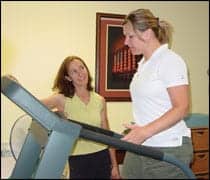A multidisciplinary panel of experts has reportedly pinpointed a set of four indicators with the “highest and most consistent prevalence” among patients with possible concussion, according to a news release issued by Wolters Kluwer Health.
The new report appears in Neurosurgery, the official journal of the Congress of Neurological Surgeons.
The release notes that based upon the analysis of the best available research data, the panel identified the set of four indicators, which is “the initial step toward developing a scientifically based approach to recognition and management of concussion—a process that is critically important in reducing the impact of concussion and brain injury on the lives of patients and the public,” says Nelson M. Oyesiku, MD, PhD, editor-in-chief of Neurosurgery.
The panel followed a systematic process in order to pinpoint studies providing information about symptoms and observable factors linked to concussion. Nancy Carney, PhD, Oregon Health & Science University, Portland, and Director of Research for the Brain Trauma Foundation, served as lead author of the news report.
In the release, the panel reports that based upon 11 independent patient samples, it singled out four indicators of concussion in individuals who were awake.
The first indicated an observed and documented disorientation or confusion immediately following a blow to the head. Impaired balance within one day of injury and slowed reaction times within 2 days following the injury were also noted as indicators. Lastly, impaired verbal learning and memory within 2 days post-injury was also designated as an indicator.
The release notes the studies also offered information regarding the results of cognitive tests over time. The proportion of tests given to individuals diagnosed with concussion showed abnormal function ranged from 58% on the first day to 8% one week post-injury. The release also states that in one of the studies, the most commonly reported symptoms were headache, dizziness, blurred vision, and nausea. However, since the information stems from one study, the question of “signature symptoms” of concussion remains unanswered, researchers say.
The new analysis, the release says, aims to provide “an evidence-based foundation” to help develop a set of evidence-based guidelines for the diagnosis, prognosis, and treatment of concussion. The release also reports that the panel acknowledged important limitations of their work, such as the fact the studies were primarily performed in athletic populations. Additional studies of patients with potential concussion in the emergency department and military settings are still needed.
Developing a more specific definition of concussion also requires research that clearly distinguishes between potentially concussive injury and true concussion, researchers say.
Carney states in the release “It is important to understand that the findings in this report are limited by the nature and quality of the available scientific studies. Clearly, more research is needed in order to derive a comprehensive and evidence-based picture of concussion.”
The panel also offers a range of recommendations intended to improve the design of future concussion studies, such as the use of comparison groups, taking measurements at fixed and relevant time points, and reporting distinct signs, symptoms, and deficit.
Source(s): Wolters Kluwer Health, Medical News Today





